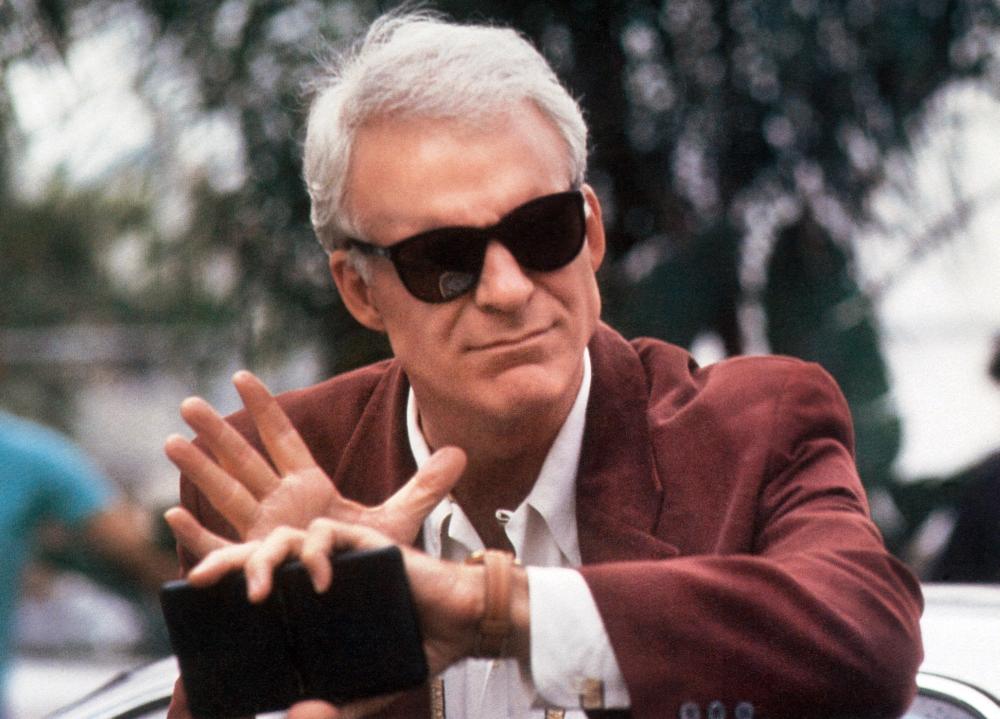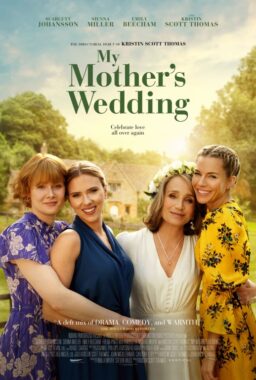For more than 80 years, the auteur theory has provided a handy guide to thinking about who’s responsible for a movie’s authorship. Yes, films are the hard work of thousands of actors, craftspeople, producers, writers and others, but ultimately, it’s the director whose “voice” is most represented in the final product. We can debate the merits of that theory, but for generations now, audiences have come to assume that the director is the person who “made” the movie we’re watching.
As a result, directors are held up as the “true” artists of the medium. We talk about their oeuvre, we dissect their themes and obsessions—we take what they do seriously. Even the most powerful, magnetic movie star—say, actor/producer Tom Cruise—isn’t viewed in quite the same light as a director. Cruise may be among Hollywood’s most bankable names, but we don’t consider him an auteur. Which isn’t to say Cruise (or other iconic stars) don’t have a strong influence on the shaping of their material. Indeed, there’s a select list of performers who don’t need to yell “action” for their sensibility to inform every frame.
Now 78, Steve Martin has worn many hats. He’s been a sketch writer, a magician, a stand-up, an author, a playwright, an actor, a songwriter, an essayist, a screenwriter, an Oscar host and a Broadway composer. He’s had Top 40 hits, won an Honorary Oscar and is one of the stars of the Hulu comedy-mystery series “Only Murders in the Building.” If I’ve accidentally omitted any of his accomplishments, that only speaks to the dizzying scope of his ambitions and achievements. But there’s one major creative endeavor he’s never really taken on: directing. And yet, when you look back at the man’s film career, it’s hard not to see a guiding vision that weaves through his disparate work—and that vision belongs to him. I’m not suggesting Martin runs roughshod over his directors or is some power-mad perfectionist, but he may be one of the few modern stars who has shaped his oeuvre so compellingly without getting behind the camera. If a comic genius deserves the title auteur, it’s him.
Let the record show that Martin does have a scant few directing credits to his name—it’s been a while, though, and nothing very major. His last was for directing the pilot to the short-lived 1986 sitcom “Leo & Liz in Beverly Hills,” which he co-created, starring Harvey Korman and Valerie Perrine. But aside from a couple forgotten TV things, directing has never been much of an interest. Which is surprising considering, from an early stage, he’s been invested in following his own instincts and developing his own voice.
That comes through clearly in the first half of Morgan Neville’s new two-part Apple TV+ documentary “Steve! (Martin): A Documentary in 2 Pieces”—the half that focuses on Martin’s stand-up years—and Martin’s wonderful 2007 memoir Born Standing Up, which does the same. Creating an act is difficult enough, but as Martin explains both in the film and his book, he was also after a brand-new approach to comedy—one in which the obvious signposts (like conventional punchlines) were stripped away in favor of absurdism, silliness and straight-up nonsense.
Not that his brand of humor was actually nonsense—there was intellect and purpose behind the tomfoolery. In Born Standing Up, he recalls being enamored of Lewis Carroll’s whimsical word games. “Appearing to be silly nonsense, on examination they were absolutely logical—yet they were still funny,” Martin writes. “Lewis Carroll’s clever fancies from the 19th century expanded my notion of what comedy could be.” Making ridiculous, terrible-looking balloon animals or inviting his audience to join him outside the venue when the show was over, Martin deconstructed comedy by suggesting that anything could be funny, a brainy approach meant to seem mindless. Nobody did what he was doing with stand-up in the 1970s, and “Steve! (Martin)” illustrates how massively popular he was pursuing his playful, cockeyed vision.
The journey from stand-up to movie stardom doesn’t have many success stories. Richard Pryor was in some hits, but more commonly, comics end up going into sitcoms—often incredibly beloved ones, as proven by Jerry Seinfeld and Ray Romano. (Funny enough, both men recently made their feature directorial debut.) Adam Sandler was a stand-up before “Saturday Night Live,” but I’d argue his later film stardom was more a product of being on that venerable NBC show. Quite simply, no stand-up has matched Martin’s leap to the big screen.
With hindsight, perhaps we can now more clearly see how it happened. Of course, talent, hard work and luck are all important factors. But in early films such as “The Muppet Movie” and “The Jerk,” he had an advantage that other stand-ups didn’t: In a sense, on stage he was playing a character, so portraying one on screen wasn’t so much of a stretch. Stand-up greats like Richard Pryor, Bill Cosby and George Carlin had personas, and maybe would even adopt alter egos in their routines, but they were essentially being themselves in front of their audience. Martin wasn’t, honing an act that called attention to the mechanics of show business, the utter phoniness of that guy up there trying to ingratiate himself for our amusement. The Steve Martin on stage was an idea—a postmodern, ironic way of thinking of entertainment. The actual Steve Martin was able to do something similar with his first movie roles—fans were used to him being somebody else.
“Steve! (Martin)” makes plain that the leap wasn’t easy, though: The press and the public looked for the wild-and-crazy-guy in somebody like Navin from “The Jerk,” which Martin co-wrote. Even if the stand-up guise was a construct, Martin had to push past it to become a movie star. And in the 1980s, you can see him trying to shed that well-crafted, boisterous put-on so he could play regular guys. Navin’s manic idiocy gave way to the risk-taking of “Pennies From Heaven,” a musical drama that flopped, and the genre send-ups “Dead Men Don’t Wear Plaid” and “The Man With Two Brains”—the latter two co-written with director Carl Reiner, who had also helmed “The Jerk.”
But 1984’s “All of Me” was the turning point, a comedy in which Martin’s apathetic lawyer character is suddenly invaded by the soul of his dead client (Lily Tomlin), a nutty premise that allowed Martin to show off his gift for physical comedy. “All of Me” was also directed by Reiner, a comic legend, but the movie seemed to belong to Martin—a gross oversimplification, I realize, which negates Reiner’s fine work behind the camera. And yet, Martin owned the role and the film, establishing a pattern he’d follow for the rest of his film career. He wouldn’t direct his pictures, but his spirit seemed to embody them.
You could make a similar argument about other stars—especially comedians. How often do we remember who directed a Jim Carrey film? Or an Adam Sandler flick? That’s partly a reflection of how shabbily comedy is treated in comparison to drama. (Auteurs make serious movies, right? Everybody knows that comedies are lightweight fluff—anybody could direct them.) That said, that bias does affect how we perceive comic actors and the work they do. Often, because comedies have a looser, more dialogue-oriented approach, we don’t appreciate the care that goes into them from a stylistic perspective—even some of the best comedies feel a little slapdash, a little thrown-together.
That assessment is unfair, of course, but it does help explain why some of Martin’s greatest triumphs—including “Roxanne” and “L.A. Story”—seem to flow directly from his personal maturation and increasingly sophisticated sensibility. Directed, respectively, by Fred Schepisi and Mick Jackson, those two films cemented the idea of what kind of movie star Martin was: witty, charming, romantic, urbane, bright, a touch melancholic. Martin wrote both scripts—“Roxanne” was a modern redo of “Cyrano de Bergerac”—and in the process gave viewers a new way of seeing him.
But even when he hasn’t written his own material, there’s often a thematic coherence to the work. Watch how “Roxanne” and “L.A. Story” stem from his essence—and then compare them to the equally great “Planes, Trains and Automobiles,” which was directed, written by and produced by John Hughes. The difference in his crisp, astute comedic presence is negligible. Then recall his slimy faith healer in “Leap of Faith,” the haughty stranger in “The Spanish Prisoner,” even the soulless football team owner of “Billy Lynn’s Long Halftime Walk”: The roles are lit up by Martin’s intelligence, by that agile mind that wants to try something different, simply because he’s never done it before. Even his broad, mostly mediocre, family comedies—“Father of the Bride,” “Cheaper by the Dozen,” “The Pink Panther”—are redeemed by the slightly detached air he brings to them. Martin’s never above the material—although, you could argue, he really should have been in the case of, say, “Sgt. Bilko”—but there’s always a look in his eyes that suggests that these roles, like his stand-up persona decades before, are something of a false front. They’re not the real Steve Martin, which makes us curious who the real Steve Martin is.
That not-knowing has been part of his appeal for a long time, and it’s something “Steve! (Martin)” tries to address, to limited success. Neville asks friends and colleagues about Martin, and they seem at a bit of a loss: They confess that there’s something unknowable about the guy. Is he all masks? An artist who’s intensely private and not especially forthcoming—even Born Standing Up is more about his stand-up journey than it is about him—Martin has fashioned a career out of perfecting a facsimile of himself that we all love. And yet we can’t help but want to peek behind the curtain.
As best as I can determine, Martin has never addressed his lack of desire to be a director. In the documentary, he inexplicably claims of his stand-up years, “I guarantee you, I have no talent. None. So I had to do a workaround to get on stage.” Utter false modesty, of course, but consider for a moment that he’s at least being partly sincere. Maybe there was something too daunting—or too demanding—about directing. Maybe he didn’t want the headaches associated with the job. Or maybe he enjoyed the relative ease of writing and acting—the direct connection he’d have with an audience, just like back in his stand-up days. The great Frank Oz-helmed “Bowfinger,” Martin’s delightful 1999 Hollywood comedy, which he wrote and starred in, but it’s hard to imagine that the film would feel more like a Steve Martin picture if he had himself directed it. The wry humor, the clever worldview, the goofy absurdity: That’s Steve Martin.
Whether it’s The New Yorker essays, his play Picasso at the Lapin Agile, his ongoing stage show with Martin Short, or “Only Murders in the Building,” Martin has continued to fine-tune our way of seeing him that transcends any one movie. His writing and his acting are of a piece, digging into serious emotions but always approaching them with a light touch. It’s awfully tempting to think back to his boyhood when he was a magician—a passion he’s had all his life—arguing that the breadth and longevity of his career has been his greatest feat of prestidigitation. Not that he’s fooling us, but that he’s found a way to be omnipresent and also elusive. Others direct, but he’s an auteur all the same. That’s one hell of a trick—a vanishing act that always leaves us wanting more.












